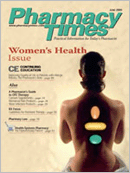Publication
Article
Pharmacy Times
Rules Do Not Spot Bone Thinning
Physicians may want to rethink using clinical prediction rules to identify which women willdevelop osteoporosis. On the other hand, the rules are useful at recognizing women whoare not likely to have the condition and most likely do not require bone density scans. Thefindings, reported in the Archives of Internal Medicine (March 14, 2005), are based on astudy of 202 women who were assessed with 3 clinical prediction rules.
The rules work by assigning points for known osteoporosis risk factors and totaling themtogether. The higher the score, the greater is the chance that the disease will develop. Thecurrent study compared the scores with actual bone test results. The scores detected 98%of the women who were at risk for osteoporosis. The rules, however, also predicted osteoporosisin a significant number of women who were unlikely to develop the disease basedon their bone test results.
The researchers concluded, "Our results suggest that these clinical prediction rules do notperform well as a general screening method to identify postmenopausal women who aremore likely to have osteoporosis. However, [the rules] may be useful in identifying womenwho need not undergo testing, especially younger postmenopausal women."







